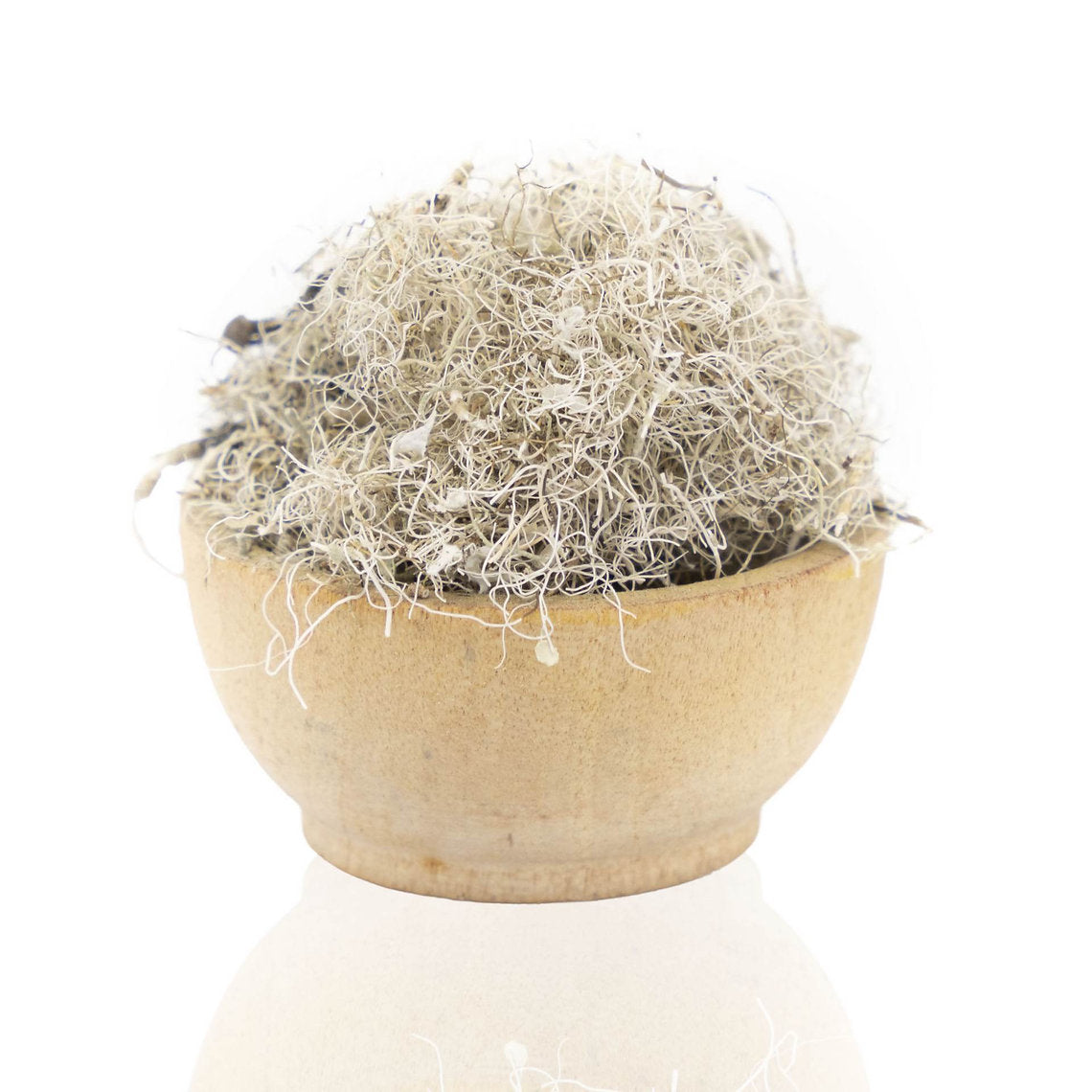
Old Man's Beard (Usnea barbata Lichen) Organic
Pickup available at eHouse Rishon
Usually ready in 24 hours
Reliable shipping
Flexible returns
Description
Lichens were among the earliest dyes used in Europe, valued by the Anglo-Saxons for embroideries and small wool embellishments. They belong to the remarkable group of dyestuffs that can create both warm oranges and the elusive purple shades, depending on the method and pH. Because they do not require mordants, lichen dyes are simple to use, though patience is key when working with the ammonia steeping method.
Historical Note
Lichens were sometimes used as substitutes for Tyrian Purple, the mollusk-derived dye reserved for royalty and the elite. By fermenting lichens in ammonia (traditionally stale urine), dyers could create purples and violets that imitated this prized colour at a fraction of the cost. These processes were especially important in Northern Europe where mollusk purple was unavailable.
Active Coloring Compounds
Lichen acids such as orcein, lecanoric acid, and usnic acid (depending on species).
CI Colour Name
Closest family: CI Natural Red 28 / Natural Violet 2.
Shading Tips
-
Boiling method → peach to deep orange shades
-
Ammonia steep method → red, violet, purple, even blue depending on pH
-
Acidic modifier post-dyeing → shifts fibres redder
-
Alkaline modifier (5% soda ash or potash) → shifts to purple or blue
Related Dyes
Other lichens in this category: Oak Moss Lichen and Icelandic Moss.
Source
Wildcrafted from Macedonia.

